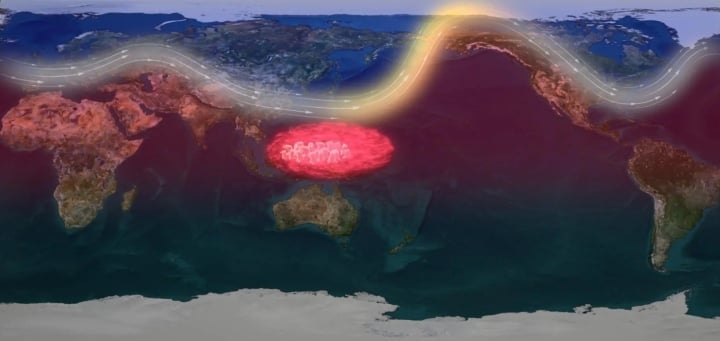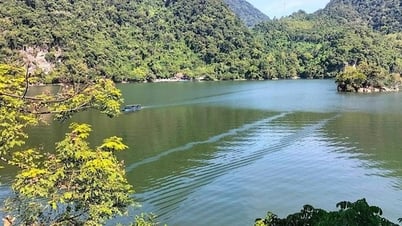On June 6, 1961, geologist Oliver first detected this periodic vibration, which he believed came from the depths of the Atlantic Plate. He also believed that the vibration would be stronger in the Southern Hemisphere during the winter.
However, scientists now say these regular periodic tremors are small earthquakes that have also been narrowed from the Atlantic Ocean to the subsurface of the Gulf of Guinea in West Africa.

The pulse - also known as “microseism” in the lexicon of seismology - was first recorded in the early 1960s by researcher Jack Oliver.
Current theory holds that earthquakes are essentially the release of energy from the crust, resulting in the emergence of seismic waves. However, many causes can form small earthquakes, in addition to crustal activities, volcanic eruptions, nuclear tests, even human activities can lead to small earthquakes, but these earthquakes are not periodic and this is the first time scientists have encountered a situation where the Earth shakes every 26 seconds.
As for the cause of the vibration, scientists have not been able to give a clear explanation after decades of research, but some scientists believe that the real culprit of the vibration is the Sun, 150 million km away.
Garrett Uler, a scientist at the University of Washington, believes that because the Gulf of Guinea is close to the equator and the Sun exerts more heat on the equator than other places, ocean currents near the equator will often hit the coast of the Gulf of Guinea, causing micro-earthquakes, a situation similar to when you tap the tabletop lightly and the other end of the tabletop will vibrate.
However, not everyone agrees with this explanation. The Chinese team of scientists believes that the origin of the 26-second microseism was not a wave hitting the continental shelf, but volcanic activity, because there is a volcano on the island near the Gulf of Guinea, and Japan's Mount Aso has also caused small earthquakes.
However, neither of these explanations solves one problem: if periodic micro-earthquakes are caused by ocean waves or volcanic activity, then why doesn't this happen elsewhere on Earth, and why are there underground earthquakes in the Gulf of Guinea?
The Earth has many areas near the equator like the Gulf of Guinea, and there are also many areas near volcanoes, so why do such periodic earthquakes only occur here?

More than half a century after scientists first heard the strange heartbeat, the answer remains elusive.
In fact, in the field of science, there has long been a saying that "humans know more about the universe than the Earth", because to go into space, humans only need to reach the first cosmic speed (for the Earth, the first cosmic speed is approximately 7.9 km/s), but to explore the inside of the Earth, it requires drilling deep into the ground. Up to now, the deepest hole drilled by humans has only reached a depth of less than 13 km, and it has not even penetrated the crust, let alone the mantle and core.
The reason this phenomenon occurs is because the temperature inside the Earth is too high, the rock layer is too hard, when the drill bit reaches a depth of 10,000 meters, its own gravity and the gravity of the Earth overwhelm the drill bit, and at that time drilling deeper into the Earth will be like using noodles to puncture the rock.
And if you think about drilling from the seabed, it is even more impossible, because the deepest part of the Mariana Trench is less than 12 km, while the average thickness of the Earth's crust is up to 37 km. Therefore, drilling a hole from the seabed under the high pressure of seawater is very difficult and has many unpredictable dangers.
Therefore, in the near future, before there is a major breakthrough in material technology, humans really cannot explore the inside of the Earth, and the unresolved things inside the Earth will remain in the stage of unsolved mysteries for a long time.
(Source: Vietnamese Women)
Useful
Emotion
Creative
Unique
Source































































![[Maritime News] More than 80% of global container shipping capacity is in the hands of MSC and major shipping alliances](https://vphoto.vietnam.vn/thumb/402x226/vietnam/resource/IMAGE/2025/7/16/6b4d586c984b4cbf8c5680352b9eaeb0)





































Comment (0)